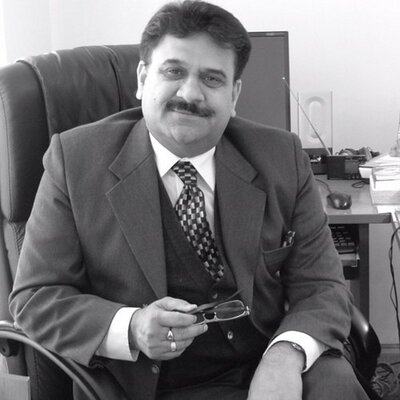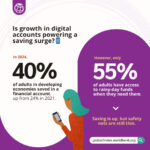As India embarked on its fast-paced, human-centric developmental journey to become a developed country, “Viksit Bharat @2047,” by the time it completes a century of independence, the past decade has been exceptional across the national and strategic spectrum. PM Narendra Modi’s call to dispense with the slavish mentality and rise and shine with the mantra of reform, perform, and transform has already begun to yield remarkable dividends.
Over 1,550 archaic and cumbersome laws were repealed, and jurisprudence updated. At 130 in 2017 in the Doing Business Index of the World Bank, India rapidly moved to 63rd place, resulting in a significant increase in Foreign Direct Investment. The innovation ecosystem has produced 1.6 million start-ups from a mere 500 ten years ago, with 118 unicorns. From fragile five to becoming the 4th largest economy in a decade is a remarkable achievement by any standards. According to Bloomberg, based on IMF data, China, India, and the USA are projected to be the three global growth engines from 2025–2030.
India has also emerged as a key proponent of the fight against climate change and a spokesman against the ‘Green Apartheid.’ India has committed to ‘zero carbon’ by 2070, but by all accounts, it seems the target may be achieved much earlier. In 2015, India, along with France, launched the International Solar Alliance (ISA), perhaps the most consequential initiative after the NAM movement of the 1950s. A monumental achievement is that 50 percent of India’s installed electricity capacity now is attributable to non-fossil sources.
This is integral to the quest for India’s energy security, which is essential for it to continue to remain the fastest-growing major economy in the world. India is converting ambition and aspiration into action. Not only did India launch another global initiative, ‘The Global Biofuels Alliance,’ during the Presidency of G20 in September 2023, but it also completed the ethanol-mixing targets well before. The same applies to its Nationally Determined Contributions (NDCs), where India is the first and the fastest to comply.
The pandemic had hit the world hard in an unprecedented manner. But India’s response was unique since it was driven by its DNA dictum of ‘Vasudhaiva Kutumbakam’—the world is one family. When the powerful countries were hoarding vaccines and medicines for geopolitical ends, India not only manufactured its own but even for others, from the UK and Russia, provided billions of vaccines to over a hundred countries as part of its ‘Vaccine Maitri’—Vaccine Friendship outreach. More importantly, it had to cater for the one-sixth of the world’s population which inhabits India.Since healthcare became a fundamental priority, India launched the government-financed insurance scheme, Ayushman Bharat–Pradhan Mantri Jan Arogya Yojana (AB-PMJAY), which is reported to have increased substantially since 2014. This is a government healthcare programme operated on a massive scale. Under AB-PMJAY, 345 million Ayushman cards have
been issued, and 29,914 hospitals have been empanelled. More than sixty-five million authorised hospital admissions have taken place under the scheme. This has been further extended to include senior citizens above 70.
India is essentially an agricultural country, and farmers are the backbone of India and its food security. Hence, even at the Doha rounds of the WTO, India has always stood for the cause and interests of a large number of developing countries. PM Modi had announced the doubling of farmers’ income through various initiatives and reforms at the grassroots level.
Some of these include a scheme for soil health cards to all the farmers, the National Agriculture Market (e-NAM), Pradhan Mantri Krishi Sinchayee Yojana (PMKSY), and Pradhan Mantri Fasal Bima Yojana (PMFBY), which provides very low premiums for farmers. The PMKSY scheme, launched in 2015, supports the use of micro-irrigation technologies—which is a crop insurance scheme. No wonder in the past decade the food grain production increased from 252 million tonnes to 332 million tonnes.
Fighting poverty has been one of the biggest tasks that the Indian Government has undertaken. Operating one of the world’s largest food security programs, the Targeted Public Distribution System under the National Food Security Act covers 81.35 million (over 800 million) beneficiaries, providing food grains to rural and urban populations. Recent decisions, such as extending free food grain distribution under the Pradhan Mantri Garib Kalyan Anna Yojana for another five years, exemplify the Government’s commitment.
Self-Reliance (Atmanirbhar Bharat) has become the key to ‘Make in India for the world’ and ‘local for global’ to be part of the global value and supply chains as it emerges as the smart manufacturing hub and services centre of the world. With its zero-tolerance-to-terror policy, the indigenous defence systems rained hell on the enemy during the Op-Sindoor action against Pakistan-based terror hideouts.
India has excelled not only in space exploration, from the first-ever landing on the southern moon and Chandrayaan to Gaganyaan missions, but also through its Digital Public Infrastructure (DPI) and Unique Digital Identity, Aadhaar, and an exceptionally large number of bank accounts across India for the distribution of the benefits and payments directly into accounts.
By linking Aadhaar with Jan Dhan bank accounts and mobile numbers (the “JAM” Trinity), the government streamlined the delivery of social welfare programs, reducing fraud and ensuring that benefits reached the intended recipients directly and efficiently. This proved particularly crucial during the pandemic, enabling swift and targeted disbursement of financial aid to those most in need. All these digital tools, apps, and digital public goods have been made available to the world, especially the developing countries. AI for All, One Earth One Health, and One Grid One World are not mere slogans but policy directives of a resurgent India steeped in its civilizational ethos.
In this fractured world order, India’s sane and value-based foreign policy has become robust, resilient, and result-oriented as it seeks to comprehensively enhance its own power spectrum through strategic autonomy and multi-alignments, entrenching reformed multilateralism and multi-polarity.
This was evident recently when PM Modi was again invited by PM Mark Carney to the G7 Summit in Canada, despite cooler ties with them, since he felt that it was important to have India at the table. It is increasingly becoming a rule shaper from G7 to G20 to BRICS and beyond. The interest of the Global South is served by example and advocacy and by being their credible voice while pursuing inclusivity and human-centric approaches.
Disclaimer: The opinions and views expressed in this article/column are those of the author(s) and do not necessarily reflect the views or positions of South Asian Herald.






